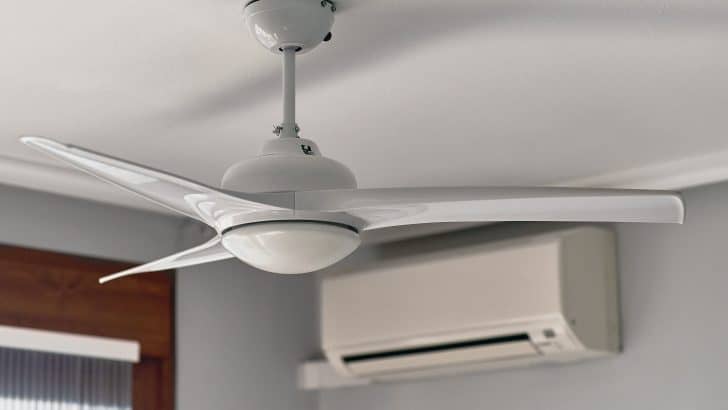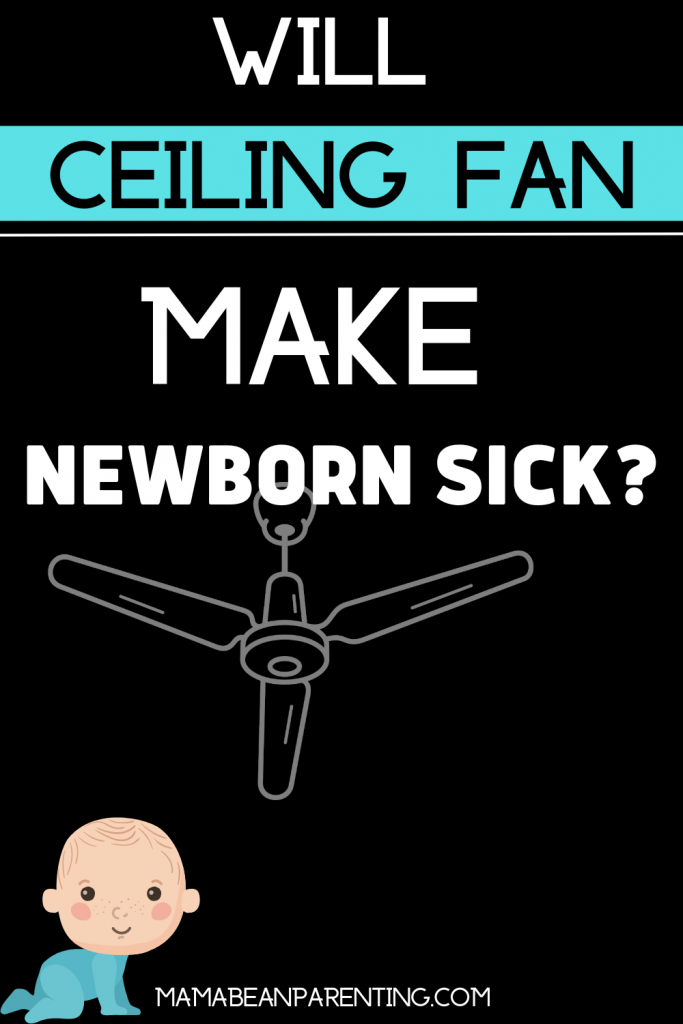Parenthood is all about asking questions and finding answers. Everything is unknown, new and scary. Every parent wants to keep their baby safe and comfortable.
Therefore, a common question and concern is: will a ceiling fan make a newborn sick? Shortly, no.
However, there are some precautions, tips and tricks that you have to know.
On one hand, using a ceiling fan to keep your baby’s room cool has its own benefits, but some parents have raised concerns about air circulation, claiming that it makes their baby vulnerable to illness and discomfort.
We have to do our best to explore the topic carefully.
We have to explore not only the benefits of using a ceiling fan in your baby’s room, but also the potential risks.
On top of that, this article aims to provide a summary of tips on how to regulate your baby’s room temperature, and therefore your baby’s temperature.
Especially for first-time parents, knowing the ins and outs of using a ceiling fan around a newborn is extremely important, because it allows you to make an informed decision.
We’re here to make it easier for you by providing an in-depth guide that answers the questions you have, as well as the concerns that may not have yet crossed your mind.
How Babies Regulate their Body Temperature
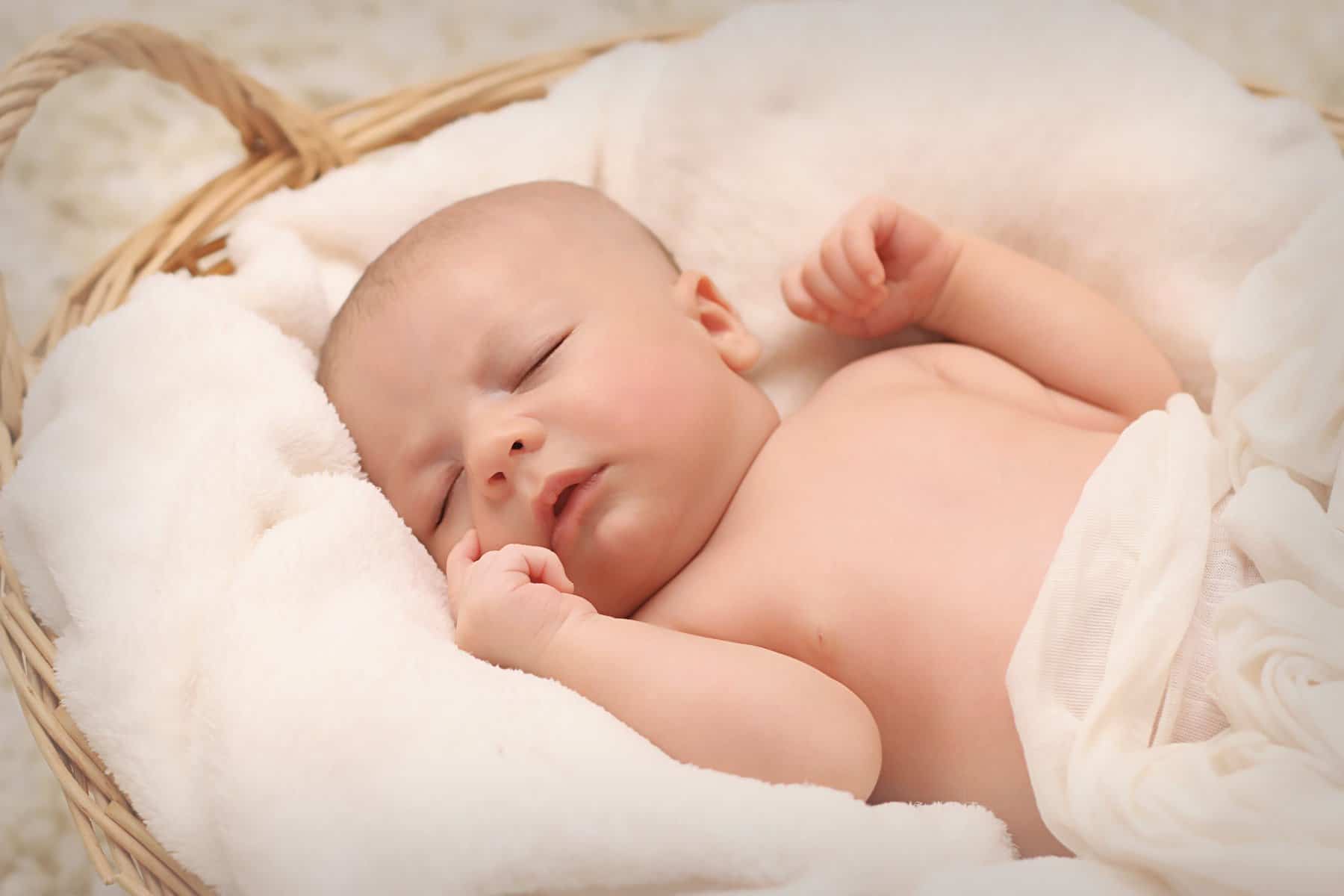
The purpose of using a ceiling fan is to help you regulate your baby’s temperature.
However, parents first have to understand how babies regulate temperature to begin with.
The main reason why parents have concerns is that a newborn is born with an immature thermoregulatory system, which makes them sensitive to cold and warmth.
Unlike adults, a baby is unable to maintain body temperature for longer periods of time or as effectively.
A newborn’s body contains large quantities of water, which additionally contributes to temperature fluctuations. But, don’t worry, babies are not all that helpless.
In fact, a newborn has a process that protects them known as an increase in metabolic heat production, also known as non-shivering thermogenesis.
This process utilizes brown fat to generate heat, which allows babies to respond effectively to the cold.
On top of that, a baby relies on behavioral thermoregulation, which basically means that your little one reacts to cold or heat by searching for a suitable, safer environment, instead.
A baby, therefore, seeks out warm areas, individuals or objects in order to compensate for a lack of heating.
Physical activity allows them to generate heat, but babies also have a set of reflexes which they use when exposed to cold temperatures, such as the startle reflex.
Despite all of the systems in place, it is generally considered that babies are particularly bad at regulating body temperature.
Therefore, as a responsible parent, you have to ensure a safe environment for your baby, in which temperatures are stable throughout the day.
Consistency is key, because a newborn is very sensitive to temperature changes.
How you regulate your baby’s temperature depends on numerous factors. Even a ceiling fan can help contribute to proper temperature regulation if used correctly.
The question of will a ceiling fan make a newborn sick still stands, but we’re here to provide answers.
Bear in mind that babies can’t regulate temperature as effectively as adults, and even though they have a range of abilities to help them, it still falls to you as a parent to ensure that your little one has a warm, comfortable environment to keep them cozy and safe.
Will a Ceiling Fan Make a Newborn Sick?
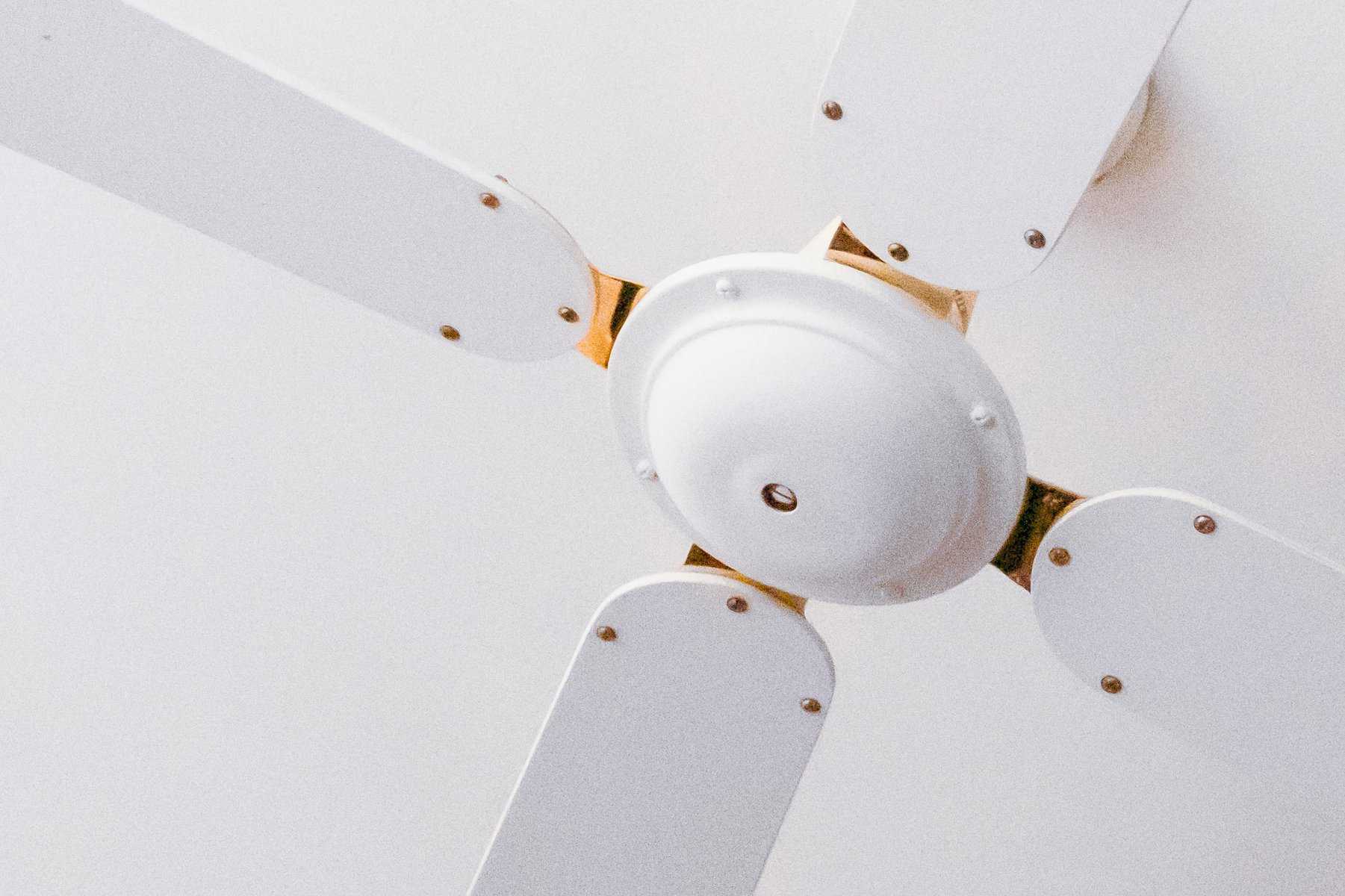
While many parents wonder will a ceiling fan make a newborn sick, it’s important to keep in mind that there is no end-all and be-all answer, because it varies on a case-to-case basis.
Generally, yes, they’re safe, but we have to go over the potential risks, as well.
The initial cause for concern is in regards to drafts.
Exposure to cold via drafts can lead to certain respiratory problems, the most common of which include coughing and wheezing.
Drafts disturb the air flow in your baby’s room, which picks up dust, pollen and allergens, and makes them easier for your baby to inhale.
Cold drafts in particular can be nasty, because they can cause your baby’s temperature to plummet.
However, the topic gets a bit more complicated with the fact that not all drafts are necessarily bad for your baby. In fact, a gentle breeze introduces a variety of benefits.
You have likely heard about the risk of sudden infant death syndrome (SIDS), and you’re doing your very best to be aware of it and to do everything in your power to prevent it.
A gentle breeze, in fact, lessens the risk of SIDS, because it circulates air safely, which prevents a buildup of carbon dioxide and makes it easier for your newborn to breathe.
Are fans bad for babies is a complex question that requires a multilayered answer.
Besides the obvious risk of drafts, there’s one factor that parents often fail to acknowledge – and that’s noise.
A fan placed too close to the baby’s crib can disrupt their sleep and comfort.
It’s also important for parents to clean the fan regularly, because otherwise it collets dust and dirt, which when circulated through the air is harmful to anyone, not just the baby.
Understanding the risks of using a ceiling fan is key for new parents.
There are benefits that you can get out of it, but only if you have taken the necessary precautions to ensure that your little one’s room temperature and harmony remains stable and uninterrupted.
Therefore, to fully answer will a ceiling fan make a newborn sick, you have to familiarize yourself with the potential risks involved with using one.
Only then can you take the necessary steps to create a safe and comfortable environment with all the benefits.
The Benefits of Using a Ceiling Fan
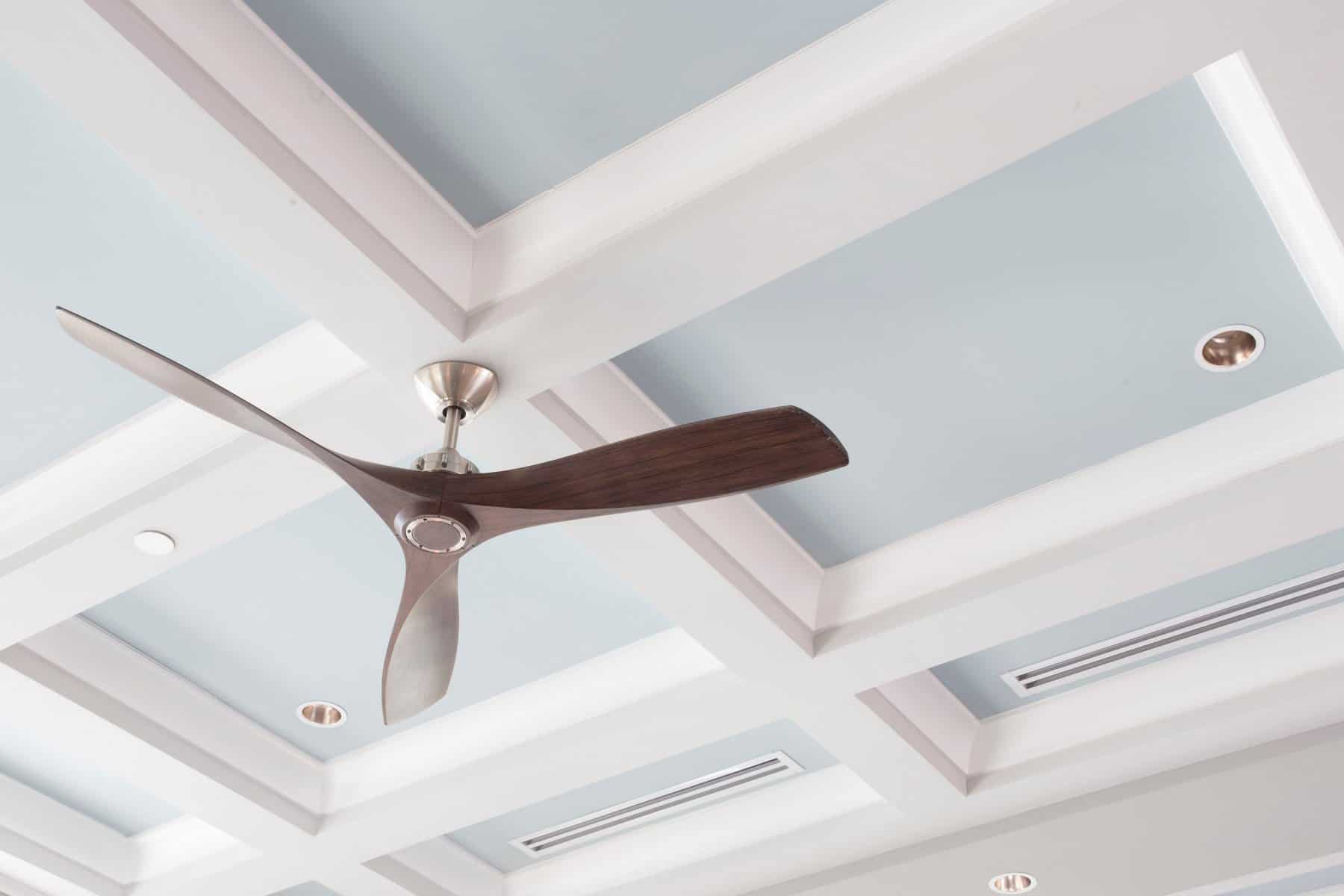
Now that you know the potential risks of ceiling fans, it’s easy to answer the question of will a ceiling fan make a newborn sick.
Let’s turn our attention to the numerous benefits of placing a ceiling fan in your baby’s room and making sure that you use the fan safely.
Here’s a breakdown of the best potential benefits:
1 • A ceiling fan improves air circulation.
Coincidentally, the drafts also pose a risk to the baby, but a gentle breeze of air helps significantly reduce not only the risk of respiratory problems, but the risk of SIDS.
Stale air, for example, can feel rather stuffy. A ceiling fan, therefore, prevents the buildup of certain harmful chemicals by helping maintain good air quality in your baby’s room.
2 • Because ceiling fans circulate air, it helps parents regulate their baby’s temperature.
Depending on whether you want to distribute warm or cool air, a ceiling fan is ideal for parents that want to make sure that their newborn stays comfortable at all times.
3 • As noted previously, certain studies suggest that ceiling fans help reduce the risk of sudden infant death syndrome (SIDS) by providing healthy air circulation. Therefore, ceiling fans excel at preventing buildup of carbon dioxide while helping babies breathe.
4 • Another benefit of using ceiling fans in your baby’s room is the fact that they provide a source of white noise. White noise has been proven to help babies sleep soundly through relaxation.
If your baby has trouble sleeping, a ceiling fan may show some progress.
5 • Parents love ceiling fans because they’re also cost-effective. They preserve energy.
As opposed to air conditioning or other types of heating systems, a ceiling fan is a more energy-efficient way to circulate air and regulate temperature in your baby’s room.
In other words, it saves you money.
6 • One thing we haven’t touched on previously is the fact that ceiling fans are notably versatile.
They come in all shapes and sizes. If you’re concerned with aesthetics, for example, there’s a variety of ceiling fans for you to choose from to find the best one.
On top of that, certain ceiling fans offer a range of extra lighting options.
Aside from all the benefits listed above, parents still contemplate and discuss will a ceiling fan make a newborn sick.
While it’s unlikely, it’s still important to exercise precaution.
For example, you want to ensure that the fan is placed at an appropriate distance from your baby so that it doesn’t disturb their sleeping habits or pose a risk to their health.
Keep all of this in mind so that your baby stays comfortable at all times.
Tips for Safely Using a Ceiling Fan
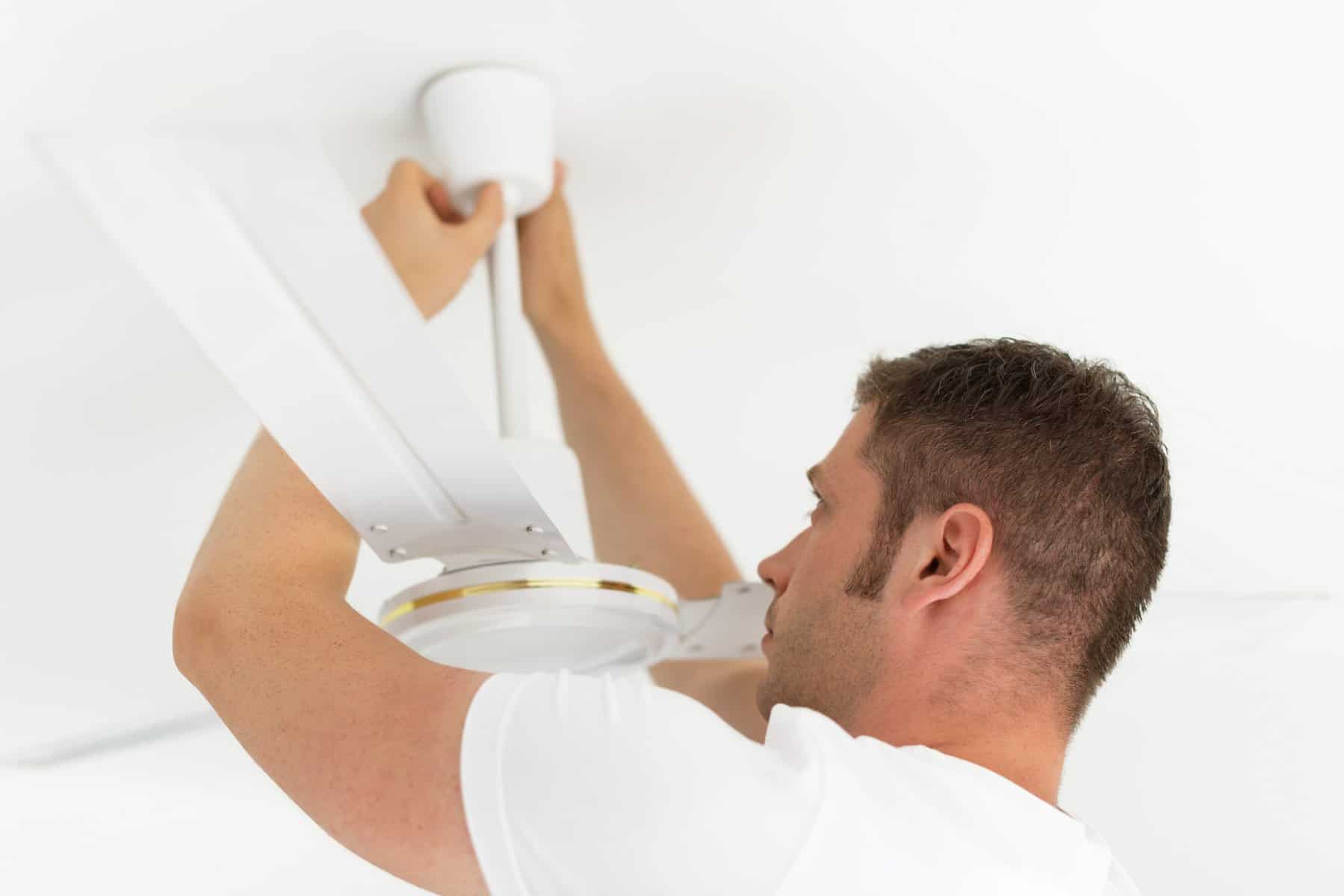
Installing a ceiling fan in your baby’s room ensures safe sleep and ventilated air, but how do you actually install it?
What do you have to keep in mind?
There are certain things, tips and tricks, that you have to bear in mind in order to create a safe space for the baby.
Here’s what you have to be mindful of:
1 • Consider distance. A ceiling fan placed too close to your baby is going to disturb their sleep, especially if it’s a loud one. Your baby should never be positioned under the fan.
So, make sure that your newborn baby is positioned at a safe distance.
2 • Most fans have an option that allows parents to regulate speed.
Naturally, you want to use lower speed options. The sweet spot is a gentle breeze.
Otherwise, a fast-spinning ceiling fan may cause drafts that are too intense for your baby, which then leads to respiratory health problems and sleep disruption.
To make the most of your purchase, go for lower speeds and circulate air naturally in your baby’s room.
3 • Clean the fan regularly. Maintain it.
When you’re cleaning your baby’s room, don’t forget to dust the fan. It’s an ideal spot for dust and dirt to collect, so you want to make sure to prevent that.
Otherwise, your fan is going to contaminate the air quality inside the room, which then causes health problems.
If you’ve got an old and rusty fan, replace it. Prioritize your baby’s health and safety.
4 • Fans come in all shapes and sizes. Some are more expensive – and for good reason. They provide a variety of safety features, such as a secure installation to prevent falling.
Even though you won’t place the fan above your baby’s crib or sleeping environment, safety features provide peace of mind for worrying parents.
Some ceiling fans come equipped with a safety feature that prevents the body and the blades from falling off.
Other than that, certain types of ceiling fans have extra features that protect against overheating. So, if you’re going to make a purchase, go over the safety features included.
5 • Making sure that your newborn stays cool or warm and shouldn’t fall to your ceiling fan alone.
You have to take into account your other measures for regulating temperature, from heating systems inside your home to simply dressing your baby appropriately.
6 • Finally, despite the tools you have at your disposal, it’s important for parents to take the time to observe their baby.
It’s a great start if you’re wondering will a ceiling fan make a newborn sick, but you have to actively monitor your baby’s reactions, as well.
If they’re coughing or wheezing, turn off the fan or adjust the speed.
However, don’t jump to conclusions. If your baby happens to have a bad reaction, make sure to investigate it thoroughly and to consult with a medical professional for guidance.
Follow these tips and you will create a safe and healthy environment for your baby.
Exploring Alternatives to Ceiling Fans
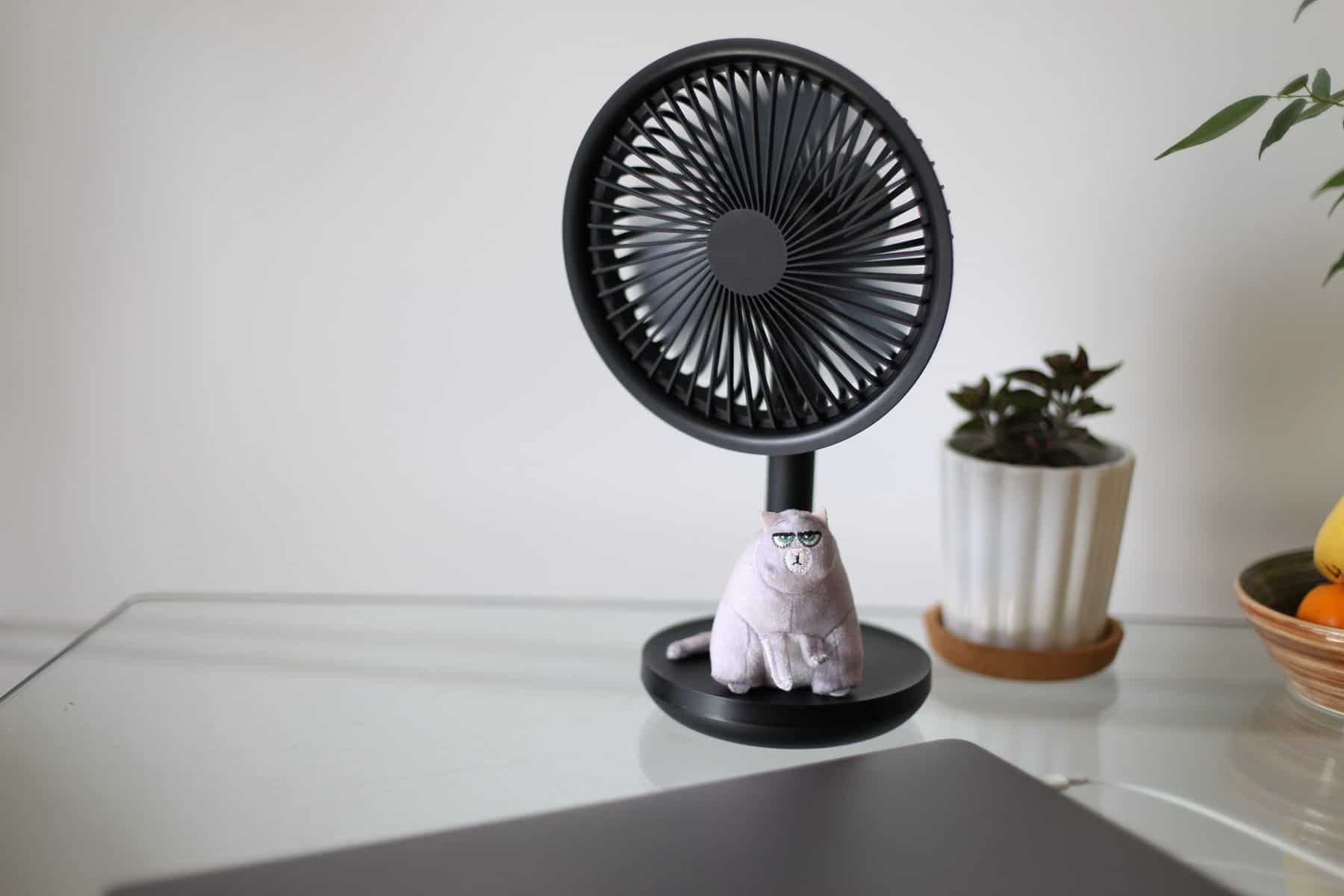
We’ve gone over the potential risks and the benefits.
With that in mind, some parents opt for alternative options. Other parents choose to expand the tools they have at their disposal, despite the benefits of using a ceiling fan.
Whether you want to use these options as alternatives or as extra features in your baby’s room, we’re here to help you make an informed decision by going over the pros and cons.
1 • Ceiling fans are great, efficient and convenient – but what about floor or table fans?
A floor or a table fan is an obvious alternative to the ceiling version, but is it any safer?
In our opinion, a ceiling fan is the safest option because it provides more cooling power and is ‘out of the way’, so to say. While a standing fan is portable, it’s also one-directional.
Yes, it likely includes rotating options, but it doesn’t circulate air all that efficiently.
However, if you’re going for something more portable, then a floor fan is ideal for you. Still, remember that the same guidelines apply.
Make your baby comfortable by pointing the fan away from their general direction and ensuring healthy and efficient circulation.
2 • Believe it or not, fans are considered safer than air conditioners or heaters.
It makes sense, after all, because fans create air flow in a completely natural way.
However, if you’re going to use an AC, make sure that your baby is clear from the blast of cool or warm air.
The differences are slim, so you want to consider your baby’s personal preferences, as well as your own, in order to make the right decision for your household.
It varies from model to model, but when you’re weighing the pros and cons between the two options, consider temperature control, air quality, noise levels and safety features.
3 • There are many ways to control the environment inside your newborn’s room, and a great option to have available for parents is the use of black curtains and shades.
After all, you will often have to block out the sunlight from entering the room and heating it up.
That’s where blackout curtains come in.
They’re also useful when your baby is sleeping throughout the day, because blackout curtains allow you to darken the room and make your baby calm and comfortable.
4 • We doubt that you won’t consider this one, but we will mention in for the sake of completeness.
Dress your baby appropriately.
Depending on the weather, summer or winter, you want to make sure that your baby is dressed in weather-appropriate clothing.
The clothing your baby wears is important, so take the time to research it carefully.
From lightweight, breathable clothing to swaddling blankets, there’s a lot of variety.
All of this, however, helps contribute towards temperature regulation, making sure that your little one stays safe and comfy, as well as helping your baby sleep without issues.
5 • Even though you have various options available, parents are encouraged to use natural ventilation inside their baby’s room.
Occasionally, you want to open windows or doors to create a natural flow of air that none of the options above fully replicate.
However, there are certain potential risks of opening windows and leaving your baby unattended inside their room, such as pests, so make sure to prioritize your baby’s safety.
Using these alternative options is fine, but ideally, you want to have multiple options at the ready when it comes to ensuring that your baby’s environment stays perfectly comfortable.
In Conclusion
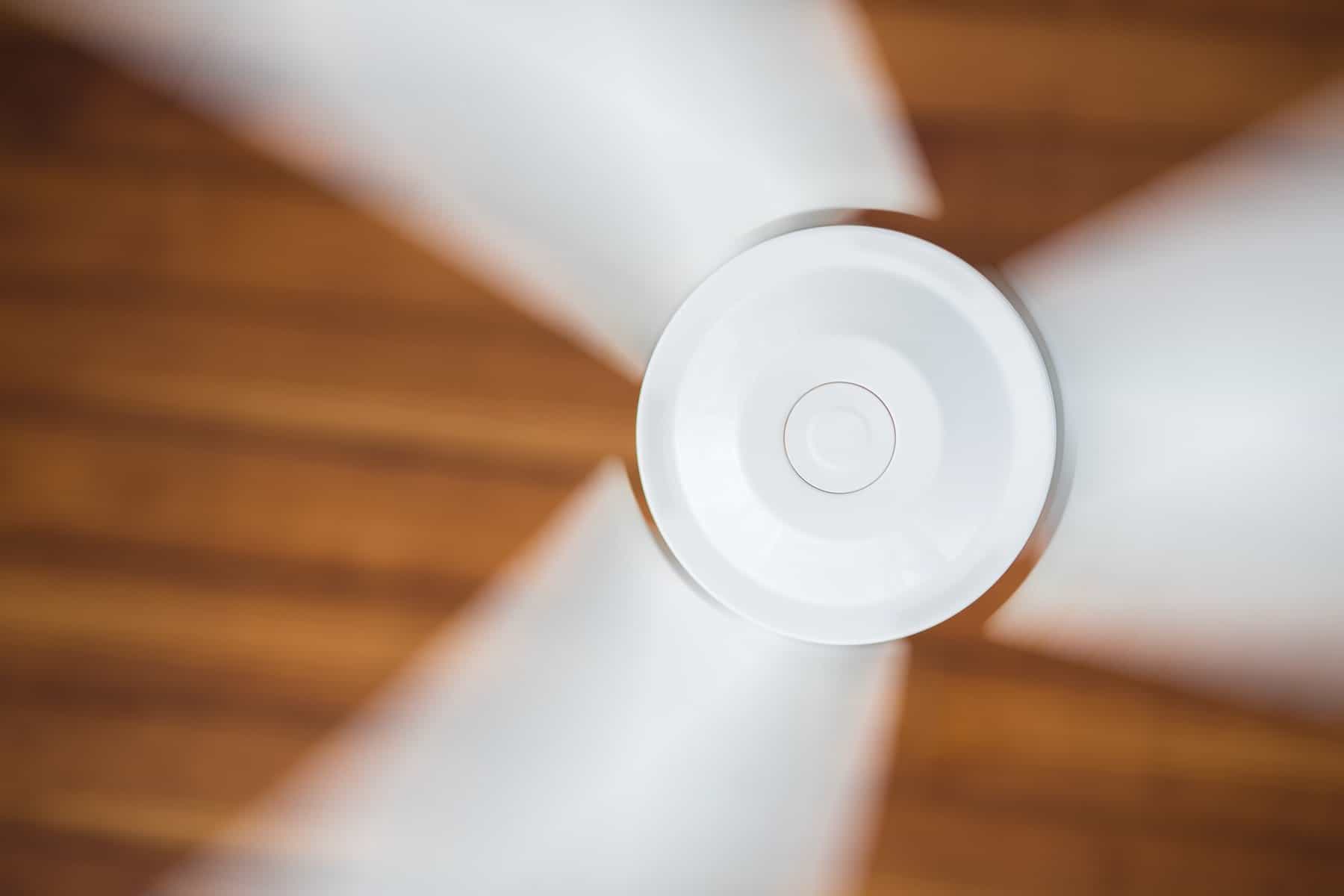
All things considered – will a ceiling fan make a newborn sick?
Generally, it’s not going to cause any problems.
If your baby is sick and you’ve got a well-positioned ceiling fan in the room, the cause is likely something else entirely, because ceiling fans are considered safe to use.
However, you have to mind the potential risks.
Having covered them thoroughly in this article, we have no doubt that you will take all the necessary steps to safely and effectively use a ceiling fan inside your baby’s room.
From installing the fan properly to minding the distance between the fan and the baby, making sure that you’re using lower speed options and generally keeping a close watch over your baby – you will get all the benefits of a ceiling fan and make your baby happy.
We also want to stress the importance of using alternative temperature-regulating options in order to create a safe and comfy environment.
This improves not only the quality of ventilation inside the room, but allows a newborn baby to sleep soundly.
The benefits are many, including a reduced risk of SIDS.
So, what’s stopping you?
If you still have concerns, consult with a pediatrician.
They can help shed light on the topic in a professional way and provide a more medical explanation of the benefits.

Mother of three and a primary school teacher. I’ve always loved being around children and helping them, so I chose my path as a teacher. It is sometimes hectic with three children, but I am 100 percent into it and wouldn’t change it for anything in the world.

